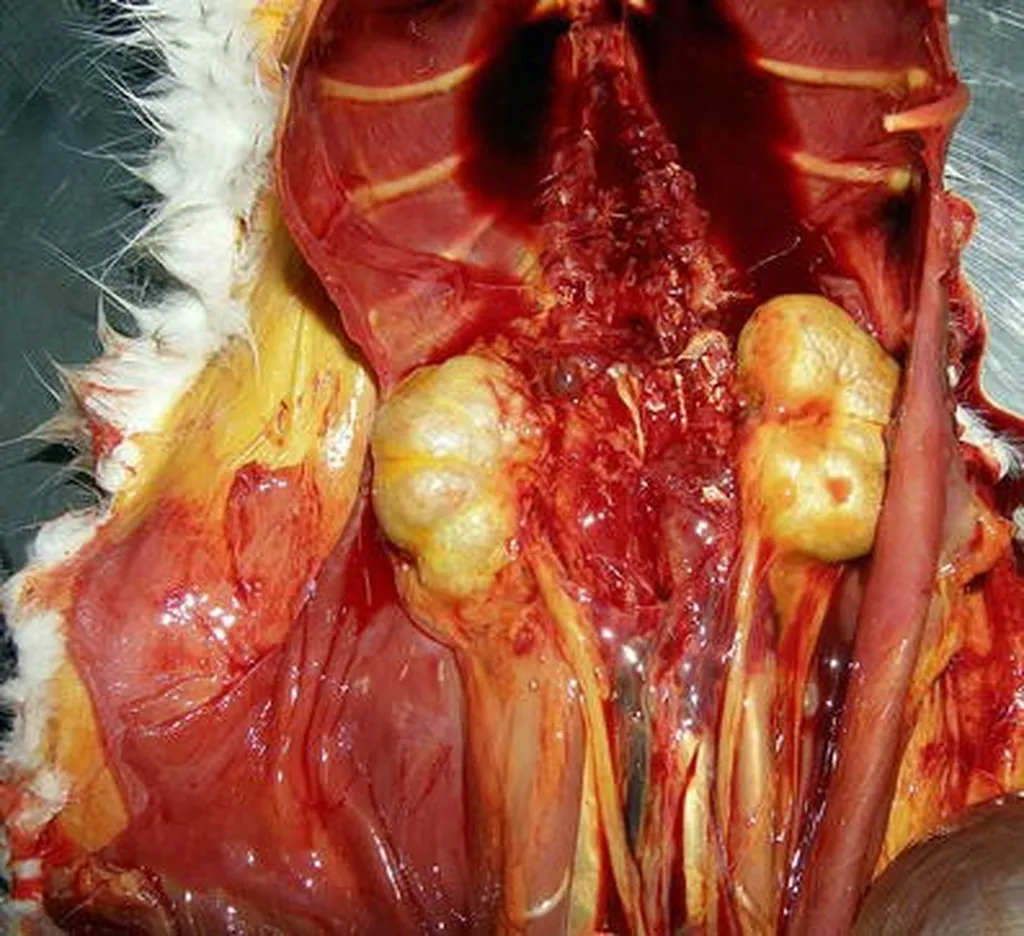In a groundbreaking study published in *Scientific Reports* (translated as *Scientific Reports*), researchers have uncovered a fascinating link between genetic variations in serum amyloid A (SAA) proteins and the distribution of amyloid deposits in the kidneys of cats suffering from AA amyloidosis. Led by Natsumi Kobayashi from the Laboratory of Veterinary Toxicology at Tokyo University of Agriculture and Technology, this research not only sheds light on the intricate mechanisms of amyloid deposition but also opens new avenues for understanding and potentially treating this debilitating condition.
Amyloidosis, a disease characterized by the abnormal buildup of amyloid proteins in various organs, has long puzzled scientists due to its varied presentation and progression. In cats, the kidneys are often the primary targets of amyloid A (AA) amyloidosis, leading to severe renal dysfunction. However, the reasons behind the differing patterns of amyloid deposition within the kidneys have remained elusive—until now.
Kobayashi and her team analyzed the kidneys of five mixed-breed cats, observing distinct patterns of amyloid deposition. While all cats exhibited amyloid deposits in the renal glomeruli and papillae, the distribution in the medulla varied significantly. Two cats showed widespread amyloid deposits extending from the corticomedullary junction to the inner medulla, primarily located in the basement membrane of renal tubules. In contrast, the other three cats had sparse amyloid deposition localized in the perivascular stroma near the corticomedullary junction.
The breakthrough came with the identification of four SAA alleles involving six amino acid substitutions. Mass spectrometry and immunohistochemistry revealed that AA amyloid derived from SAA with the amino acid glutamine (Q) at position 45 was predominantly deposited in the cortex and papilla, as well as in the perivascular stroma of some parts of the outer medulla. Conversely, AA amyloid derived from SAA with arginine (R) at position 45 was specifically observed around the tubules in the renal inner to outer medulla.
“This study is the first to report such a complex pattern of amyloid deposition within the same organ,” Kobayashi explained. “Our findings suggest that the primary structure of the amyloid precursor protein determines the distribution of amyloid deposits in the kidney.”
The implications of this research are profound. Understanding the genetic underpinnings of amyloid deposition patterns could lead to more targeted and effective treatments for amyloidosis in cats and potentially other species, including humans. “By identifying specific genetic variations that influence amyloid distribution, we can develop therapies that address the root cause of the disease rather than just managing symptoms,” Kobayashi added.
For the energy sector, this research could have indirect but significant impacts. As the understanding of protein misfolding and deposition improves, similar principles could be applied to developing more robust and efficient biocatalysts for bioenergy production. Enzymes used in biofuel processing, for instance, could be engineered to resist misfolding and aggregation, enhancing their stability and effectiveness.
Moreover, the insights gained from this study could pave the way for innovative diagnostic tools. Early detection of specific SAA polymorphisms could allow veterinarians to predict the progression of amyloidosis and implement preventive measures, ultimately improving the quality of life for affected animals.
As Kobayashi and her team continue to unravel the complexities of amyloidosis, their work serves as a testament to the power of interdisciplinary research. By bridging the gaps between genetics, protein chemistry, and veterinary medicine, they are not only advancing our understanding of disease but also laying the groundwork for future innovations that could benefit both animals and humans alike.
In the words of Kobayashi, “This is just the beginning. The more we understand about the molecular mechanisms of amyloidosis, the closer we get to finding a cure.”

